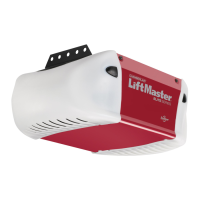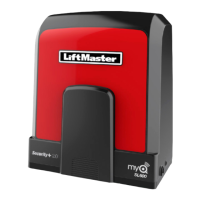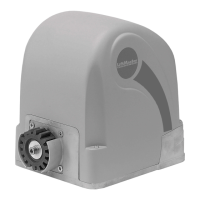7
STATUS LEDS
LED STATE DEFINITION
INPUT POWER
OFF OFF state
ON AC power available
TIMER
OFF The timer is disabled
ON The timer is enabled
1 blink/second The timer is running
2 blinks/second The timer is paused
8 blinks/second The timer is cancelled
GATE MOVING
OFF The gate is stopped
ON The gate is opening or closing
1 blink/second E1 (single entrapment)
8 blinks/second E2 (double entrapment)
ACC PWR OVLD
OFF OFF state
ON Accessory overload protector opened
TEST BUTTONS
CONTROL BOARD
FORCE DIAL
The FORCE DIAL on the control board is used for fine tuning the force in cases where wind or environmental changes may affect the gate
travel. Based on the length and weight of the gate it may be necessary to make additional force adjustments. The force setting should be
high enough that the gate will not reverse by itself nor cause nuisance interruptions, but low enough to prevent serious injury to a person.
The force setting is the same for both the open and close gate directions.
1. Open and close the gate with the TEST BUTTONS.
2. If the gate stops or reverses before reaching the fully open or closed position, increase the force by turning the force control slightly
clockwise.
Perform the “Obstruction Test” after every force setting adjustment:
1. Open and close the gate with the TEST BUTTONS, ensuring that the gate is stopping at the proper open and close limit positions.
2. Place a solid object between the open gate and a rigid structure. Ensure that the gate, the solid object, and the rigid structure can withstand the
forces generated during this obstruction test.
3. Run the gate in the close direction. The gate should stop and reverse upon contact with the solid object. If the gate does not reverse off the solid
object, reduce the force setting by turning the force control slightly counter-clockwise. The gate should have enough force to reach both the open
and close limits, but MUST reverse after contact with a solid object.
4. Repeat the test for the open direction.
Used to operate the gate (OPEN, STOP and CLOSE). Also used to view the code history (refer to the Troubleshooting section).
This manual downloaded from http://www.manualowl.com

